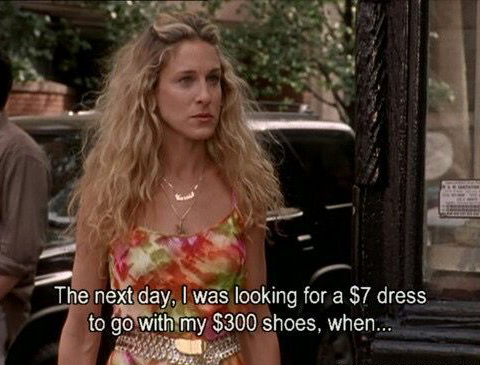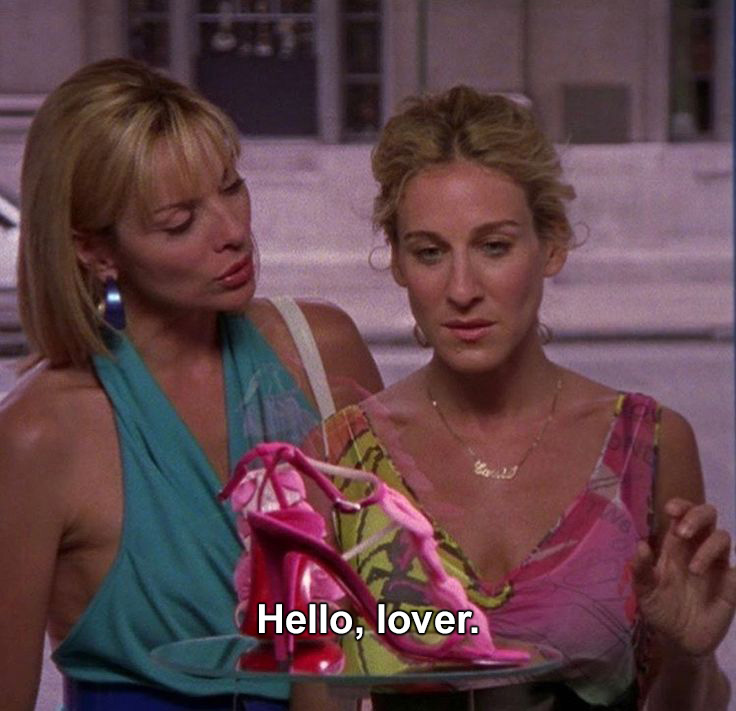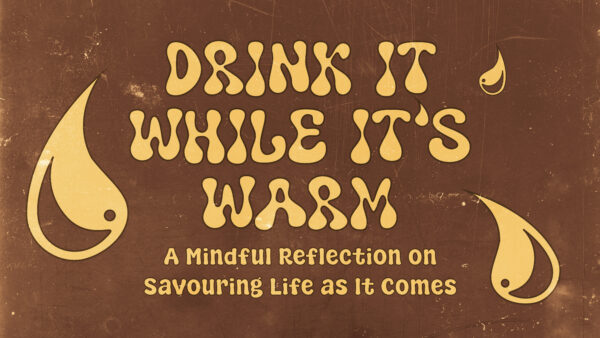Carrie Bradshaw’s iconic love for high heels has become a defining part of her character and a symbol of fashion freedom for many viewers. Her closet, filled with designer shoes, represents confidence, success, and individuality. But when we look closer, her spending habits raise important questions. Is Carrie simply passionate about fashion, or is her shoe obsession a sign of something deeper? Carrie’s relationship with shopping might reflect more than just a personal style. It might reveal how emotional dependence can hide behind glamour.

Carrie’s Shoes as Self-Expression and Emotional Outlet
For Carrie Bradshaw , shoes are more than just fashion statements. They are a personal form of self-expression. Each pair she wears reflects her mood, her sense of identity, or the version of herself she wants to project. Her heels are bold when she feels confident, playful when she’s in love, and extravagant when she needs a lift. Through her footwear, Carrie communicates what words sometimes can’t. It’s her way of telling the world how she feels without saying a thing.

But this relationship with shoes isn’t always lighthearted. What begins as a creative outlet often shifts into emotional coping. In moments of heartbreak or stress, we often see her turn to shopping—not to friends, not to therapy. Her closet becomes a kind of safe haven, offering short-term relief in the form of new purchases. This pattern mirrors the behavior often associated with addiction, where consumption becomes a way to avoid emotional discomfort.
Spending Beyond Her Means
When we think of addiction, the first image that comes to mind is often substances. This is why Carrie’s addiction remains so hidden and why it is both normalized and glamorized.
Carrie famously admits to having spent over $40,000 on shoes, while having little in savings. This isn’t just quirky television writing, it reflects a deeper issue. The lack of financial control, especially when it jeopardizes her stability, points to a compulsive behavior. Addiction, whether to substances or shopping, often involves the sacrifice of long-term wellbeing for short-term gratification. Carrie’s behavior, when stripped of its fashion gloss, might not be so different.

Emotional Substitution: Are the Shoes Replacing Something?
Carrie is often searching for love, identity, meaning. Her shoes sometimes fill the emotional gaps left by failed relationships or personal confusion. In many ways, they become stand-ins for security, affection, or validation. This substitution is common in addictive patterns, where objects or habits temporarily soothe deeper emotional wounds. The high of a new pair of heels replaces, if only briefly, the low of loneliness or uncertainty.

Conclusion: Between Identity and Dependence
Carrie Bradshaw’s relationship with shoes is layered and symbolic. On one hand, her heels represent creativity, identity, and personal power. On the other, they reveal a more fragile side—one that uses shopping to soothe, distract, or regain control. This duality is what makes her so relatable. We all have our versions of “the shoes,” the things we turn to when emotions feel too heavy or life feels uncertain.

By looking beyond the glamour, we can start to see how consumer habits are often tied to emotional needs. Carrie’s closet isn’t just full of fashion—it’s full of feelings, desires, and moments of escape. Her story encourages us to ask deeper questions about what we’re really buying when we shop for comfort or validation.
Maybe the goal isn’t to judge her obsession, but to understand it. And in doing so, we might better understand our own.







Leave a Reply